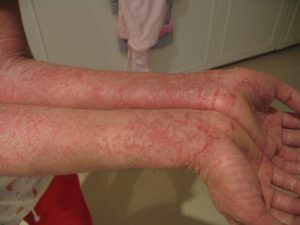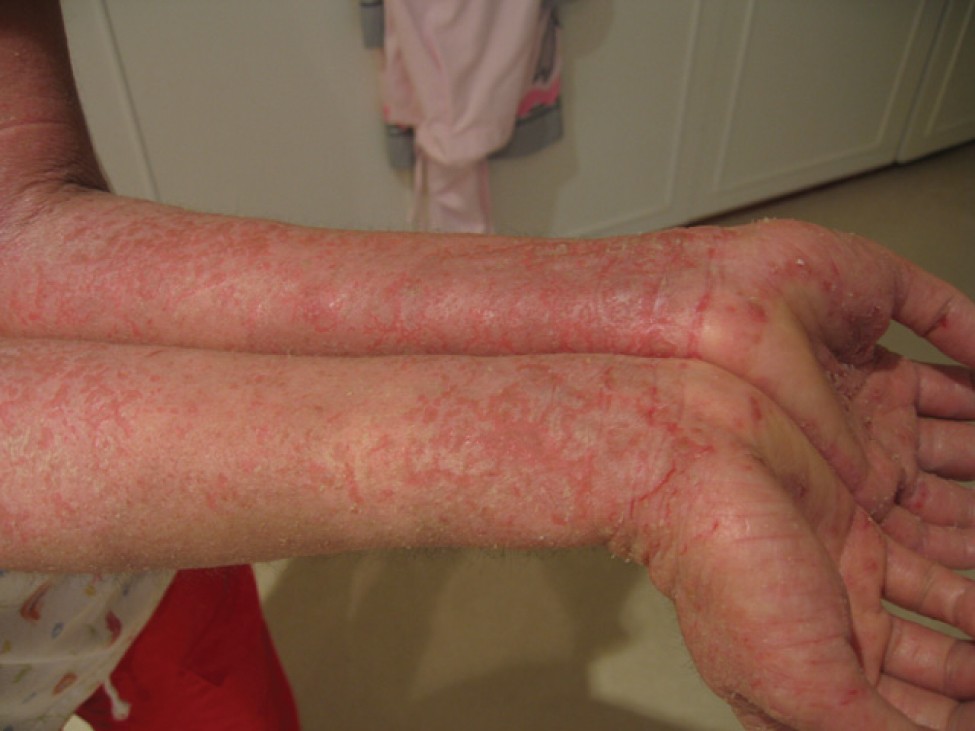 Skin problems are common among the elderly. Some skin conditions are considered a normal part of aging, while others may indicate an underlying health problem.
Skin problems are common among the elderly. Some skin conditions are considered a normal part of aging, while others may indicate an underlying health problem.
Here are the most common skin conditions that affect elderly people, and how to treat them:
Dry Skin
Dry, flaking skin is by far the most common skin problem among the elderly, affecting 75% of people over the age of 65, according to MedScape. The loss of oil glands (which help to keep the skin soft) is the main cause of dry skin. Dry skin gets itchy, which results in lots of scratching or picking at the skin. Dry skin can also become cracked and in severe cases, can bleed or become infected.
Treating dry skin:
- Use a cleansing soap that has moisturizer or is formulated for dry skin
- Use body lotion with containing Eucerin
If you are applying the appropriate moisture and not noticing an improvement, try gently exfoliating to slough off old skin cells. Bathe your loved one every other day, rather every day
- Check water temperature. Water that is too hot can dry out the skin
- Choose cotton clothing, rather than polyester or other synthetic fabrics and avoid tight clothing
- Use a soft washcloth for bathing and showering, rather than loofahs or products that contain
- Increase water consumption to keep the skin hydrated
- Avoid caffeine, which can cause itching
- Use humidifiers and vaporizes to get more moisture in the air
Bruising
While it may take quite a bit of force to cause a bruise in a young child, even minor bumps and scrapes may cause extensive bruising in an elderly person. Blood vessels become more fragile as we age, and bruising may even occur without prior injury.
Treating bruises:
- Apply a cold compress to the bruise. This reduces the blood flow to the area, reduces the size of the bruise and decreases inflammation.
- Avoid medications that cause bruising, such as non-steroidal anti-inflammatories (ibuprofen, Advil, and naproxen (Aleve).
- People who take medicines that reduce clotting (“blood thinners”) or have clotting abnormalities should seek the advice of a physician or other health-care provider immediately,
- If the bruise takes up a large area of the leg or foot, the leg should be kept elevated as much as possible
- Be on the look-out for other signs of elder abuse
Pressure Sores and Bed Sores
A pressure sore, or bed sore, is an open wound on the skin that occurs as a result of the person lying in the same position for extended periods of time. Pressure sores typically happen when a person is confined to bed or a chair.
Treating pressure sores:
- Avoid long periods of time being in the same position. Turn the person over every few hours.
- Make sure the mattress isn’t too hard. Gel mattresses or alternating air pressure mattresses can help alleviate pressure sores.
- Massage the body occasionally to increase circulation.
- Brush Liquid Band-aid over the wound to help it heal.
- Call the doctor when you notice severe redness developing. This is an indicator that sores are about to surface.
Shingles
Shingles is a disease that affects nerves and causes pain and blisters. It is caused by the same virus that causes chickenpox. The first sign of shingles is often extreme sensitivity or pain on one side of the body. Symptoms include burning, tingling, pain, numbness and fluid-filled blisters. If you suspect your loved one has shingles, call your doctor for treatment.
Skin Cancer
Skin cancer begins in the cells that make up the outer layer of the skin. It often develops on skin exposed to the sun, but skin cancer cells can also occur on areas of the skin not ordinarily exposed to sunlight. There are 3 types of skin cancer that typically impact older people:
- Melanoma
- Basal cell skin cancer
- Squamous cell skin cancer
To be on the lookout for skin cancer, check moles twice a year. Here are some warning signs to look for:
- Changes in the appearance, including the size, shape and color of a mole
- Moles with irregular edges or borders
- More than one color in a mole
- An asymmetrical mole (if the mole is divided in half, the 2 halves are different in size or shape)
- Moles that itch, ooze or bleed
- Ulcerations (holes that form in the skin when the top layer of cells breaks down and the underlying tissue shows through)
A “changing mole” or new skin growth deserves evaluation by a dermatologist, perhaps with a biopsy if skin cancer is a concern.
Skin Conditions Can Point to Bigger Health Problems
The following medical conditions could spur changes in an elderly person’s skin, so if skin irritation persists, talk to your doctor:
- Arteriosclerosis or other blood vessel diseases
- Diabetes
- Heart disease
- Liver disease
- Malnutrition
- Obesity
- Reaction tomedication
- Skin cancer
Article Source: https://www.agingcare.com/Articles/treatments-bed-sores-pressure-sores-shingles-skin-cancer-146550.htm

